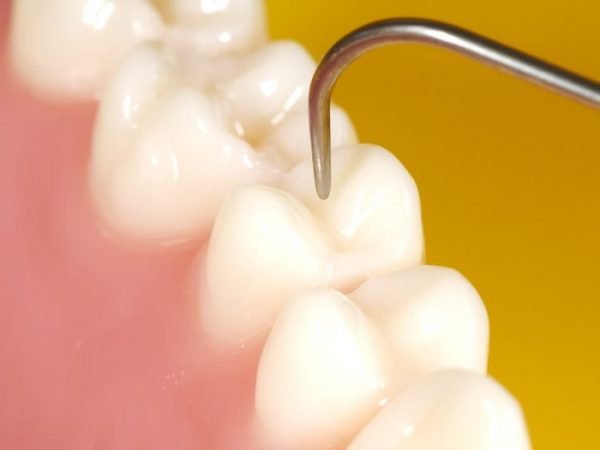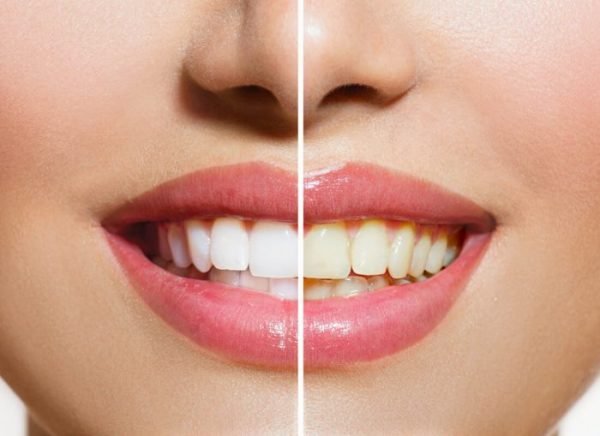ABOUT BRACES
Braces are used to straighten and align teeth. They can help to correct many orthodontic problems, and prevent problems further down the line. The brace works by applying continuous but gentle pressure to the teeth, which causes the teeth to slowly move. In order for the teeth to move into the desired direction, the braces need to be adjusted regularly by the orthodontist.
Braces are more effective in children and it is usually recommended to start the treatment at around the age of 12. However many adults are getting braces to correct misaligned and crooked teeth.
Whilst wearing braces, oral hygiene is extremely important as food can become easily trapped in the braces, which can lead to tooth decay. Some foods such as chewy or sticky food should be avoided. When the braces are first fitted, patients will usually experience some pain while the mouth adjusts, soft foods are recommended and cutting food into small pieces will help make chewing easier.
There are different types of braces which can be used and this varies with each patient. Some braces are removable and others fixed into place for the entire length of treatment. Removable braces generally tend to require less time than fixed braces.
Patients looking for invisible braces can consider getting lingual braces (which are hidden behind the teeth), ceramic braces (which are similar in color to natural teeth), and clear removable aligners or Invisalign.
Fixed braces usually need to be worn for 6 to 24 months, and in this time the orthodontist will need to adjust the braces every 4 to 6 weeks. For this reason, patients should be willing to travel many times, or have a dentist at home who can help with the follow-up care.
Recommended for
- Crooked teeth
- Overcrowding
- Overbites
- Underbites

COMPARE BRACES PRICES AROUND THE WORLD
| Country | Cost |
|---|---|
| United Kingdom | 2392€ |
| Thailand | 1039€ |
| Mexico | 897€ |
| Hungary | 720€ |
| Poland | 352€ |
HOW TO FIND QUALITY TREATMENT ABROAD
BEFORE BRACES ABROAD
Orthodontic treatment types vary from patient to patient and the specific treatment path is entirely unique. For all patients, however, initial moulds need to be made up by taking impressions of the patient’s mouth. From these impressions, a first brace device will be built.
The orthodontist will also usually take photographs of the teeth before the treatment begins, so that an accurate comparison can be made once the treatment is finished.
HOW IS IT PERFORMED
With traditional metal fixed braces, an adhesive is first placed on the teeth and the brackets are then applied to the teeth individually. A wire is then fitted through the brackets and fixed into place.
Treatment varies, but for most patients, they will need to visit the orthodontist responsible for their treatment every 4 to 6 weeks to have the braces tightened and readjusted.
Materials
Traditionally, braces are made from stainless steel or stainless steel with titanium, however, nowadays there is a high demand for cosmetic braces. As a result, many dentists offer “ceramic” braces (usually made from strong composite) or clear plastic braces such as Invisalign. Lingual braces are another popular choice, as they are strong like traditional braces, but they are not easy to see as they are applied to the reverse side of the tooth (the lingual side, facing the tongue).

WHAT TO EXPECT AFTER BRACES
Post procedure care
It is important that patients follow all instructions from their orthodontist. If patients stop wearing the braces early, teeth may move out of place again.
It is important to maintain excellent oral hygiene while the braces are fitted as food can easily get stuck in the braces.
Once the treatment is finished, patients may need to wear a retainer afterwards to maintain the new position of the teeth.
Possible discomfort
Braces apply a constant pressure on the teeth, therefore discomfort is expected. The pain and discomfort is usually worse immediately after a tightening appointment and will improve afterwards.
IMPORTANT THINGS TO KNOW ABOUT RHINOPLASTY
Potential risks
- Root resorption and other root damage
- Gum disease
- Tooth decay
- Gingival overgrowth
- Relapse of teeth into initial position after treatment
FREQUENTLY ASKED QUESTIONS
After the braces are fitted, there may be some soreness or discomfort. This will last for around a week afterwards, as your teeth are repositioned. This is usually easily treated with an over-the-counter pain reliever such as ibuprofen. Orthodontic wax can help prevent sores wear the metal rubs against soft tissue until your mouth is used to the braces. Rinsing with warm salt water can also help discomfort, as can only eating soft foods until you are used to them.
When the braces are tightened over time, it will also cause some soreness for a few days afterward.
Braces work by applying constant, light pressure on the teeth, which over time pulls the teeth into position. A thin arch wire is threaded between the brackets, which are attached to the teeth. The wire pulls on the brackets, which pull the teeth until they are straightened. The orthodontist will check on your progress at regular intervals and make adjustments as needed.
Researchers don’t know what causes TMJ. However, studies have shown no connection between TMJ and orthodontic treatments, including braces.
The length of time patients need braces varies, depending on how significant the problem being corrected is. Some patients need to wear braces for up to 2 years, while others may only need braces for 6 months. You will be able to see progress over time, as the braces slowly move your teeth into a healthier position.















